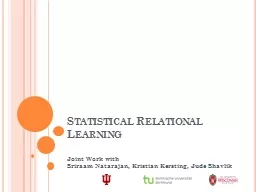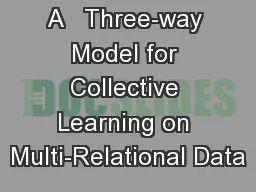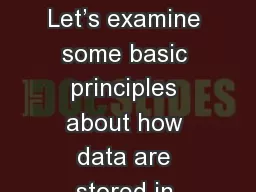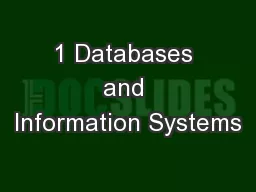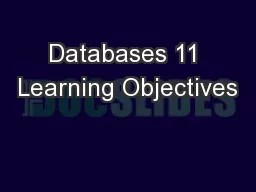PPT-Relational Databases
Author : conchita-marotz | Published Date : 2016-10-22
Week 7 INFM 603 Agenda Questions Relational database design Microsoft Access MySQL Scalability Muddiest Points When to put JavaScript in the HTML head Whats a Class
Presentation Embed Code
Download Presentation
Download Presentation The PPT/PDF document "Relational Databases" is the property of its rightful owner. Permission is granted to download and print the materials on this website for personal, non-commercial use only, and to display it on your personal computer provided you do not modify the materials and that you retain all copyright notices contained in the materials. By downloading content from our website, you accept the terms of this agreement.
Relational Databases: Transcript
Download Rules Of Document
"Relational Databases"The content belongs to its owner. You may download and print it for personal use, without modification, and keep all copyright notices. By downloading, you agree to these terms.
Related Documents





